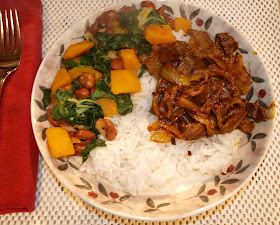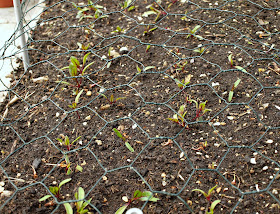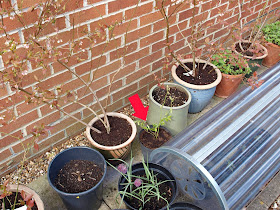Yesterday I wrote about trying to use up my Chard and Perpetual Spinach in order to make space for my Three Sisters plants. Well, here's what I did with some of the Chard. I think I mentioned previously that Jane is not keen on Chard, so since Jane is presently away looking after her Mum, I used some of it in a meal just for myself. The starting point was these two plants.
Individually they were not very big, but when disassembled each one provided several big leaves with bright white stems and glossy deep green outer parts.
In the centre of each was a small cluster of delicate little new leaves with pink-tinged stalks.
I used most of the green parts in lieu of Saag (or spinach) in a curry dish. Chard is good for this because the leaves retain more texture than spinach does, which for me is a desirable feature. My dish featured Butternut Squash, (home-grown) Borlotti beans and the Chard leaves, cooked in stock thickened with coconut milk.
Actually this dish had to be cooked in three phases: the dried beans were soaked for several hours then boiled until tender; then I simmered the squash in the coconut-infused stock; then I added the Chard leaves a couple of minutes before serving.
Alongside this dish I served some stir-fried beef which had been marinated in Indian-style spices. The beef was actually a couple of very thinly-sliced "sandwich steaks" which needed rapid cooking - hence the stir-fry method. Before adding the beef I cooked in the wok a sliced medium onion, using a spoonful of rapeseed oil. I also used a spoonful of the coconut-flavoured broth from the vegetable dish to give the beef dish the right texture.
With these two dishes I served some plain Basmati rice, so this is what the assembled meal looked like before I waded in:
Of course I still have the Chard stalks to use. They will keep for several days in a plastic bag in the refrigerator, so probably one day later this week I'll braise them and serve them in a creamy cheese sauce. Oh, and I kept the tiny inner leaves for use as a salad ingredient...























































